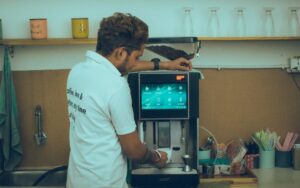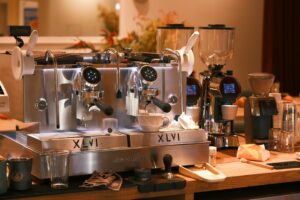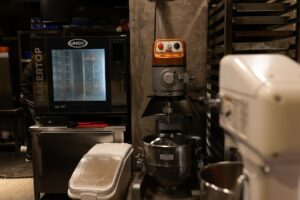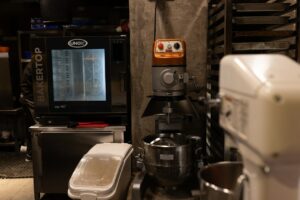Enhancing Coffee Roasting with Automated Technology: A Step-by-Step Guide
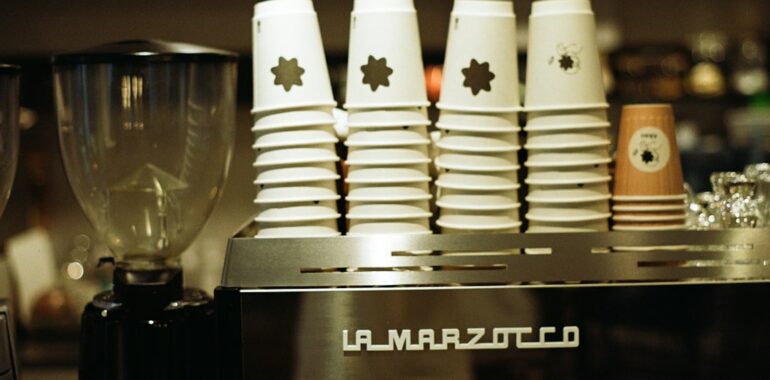
Discover how automated coffee roasting technology revolutionizes the coffee industry, ensuring consistency and quality with smart systems.
Introduction
Coffee roasting is both an art and a science, essential in bringing out the rich flavors and aromas that coffee enthusiasts crave. Traditional roasting methods rely heavily on the skill and experience of the roaster, making consistency and precision challenging. However, the advent of automated coffee roasting technology is transforming the industry, offering unprecedented control and uniformity. This guide explores how integrating automated systems into coffee roasting can elevate the quality and efficiency of your coffee production.
The Evolution of Coffee Roasting
Traditional Methods
Historically, coffee roasting has been a manual process. Roasters carefully monitor the beans, adjusting heat and timing to achieve the desired roast level. While this hands-on approach allows for nuanced flavor development, it is susceptible to human error and inconsistency.
Challenges with Consistency and Quality
Maintaining a consistent roast is crucial for delivering a reliable product to consumers. Variations in temperature, airflow, and timing can lead to inconsistent results, affecting both taste and quality. These challenges are particularly pronounced in high-volume settings where large batches are roasted continuously.
Introduction of Automated Systems
Automated coffee roasting systems leverage advanced technologies to address these challenges. By integrating sensors, precise controls, and programmable profiles, these systems ensure that each batch of coffee is roasted to perfection, minimizing variability and enhancing overall quality.
Benefits of Automated Coffee Roasting
Consistency in Quality
One of the primary advantages of automated coffee roasting is the ability to maintain consistent quality across every batch. Automated systems precisely control temperature and airflow, ensuring that each roast adheres to the specified profile.
Precision in Temperature Control
Temperature is a critical factor in coffee roasting. Automated systems can monitor and adjust temperatures in real-time, ensuring that the beans are roasted evenly and to the exact specifications required for different flavor profiles.
Efficiency and Scalability
Automation streamlines the roasting process, reducing the time and effort needed to produce large quantities of coffee. This efficiency is particularly beneficial for commercial operations looking to scale their production without compromising on quality.
Minimizing Human Error
By automating key aspects of the roasting process, the potential for human error is significantly reduced. This leads to more reliable outcomes and frees up roasters to focus on creative aspects of coffee production, such as developing new blends and flavors.
Step-by-Step Guide to Automate Coffee Roasting
Step 1: Selecting the Right Equipment
To begin automating your coffee roasting process, you need to select the appropriate equipment. This typically includes:
- Arduino or similar microcontrollers: Serve as the brain of the automation system.
- Temperature sensors: Monitor the heat levels during roasting.
- Solid-state relays: Control the power supply to heating elements and fans.
- LCD displays: Provide real-time feedback and control interfaces.
- Variable resistors and push buttons: Allow for manual adjustments and start/stop controls.
Step 2: Setting Up the Roasting Machine
Start by modifying an existing roasting machine to accommodate the automated components. For instance, an electric popcorn machine can be repurposed for coffee roasting. Key modifications include:
- Installing temperature sensors: Place them strategically to monitor bean temperature accurately.
- Disconnecting and rewiring heating elements and motors: Integrate the solid-state relays to control power flow based on the system’s commands.
- Ensuring safety: Use heat-resistant materials and secure all wiring to prevent short circuits and overheating.
Step 3: Integrating Automation Technology
Once the hardware setup is complete, integrate the automation technology by:
- Connecting sensors to the microcontroller: Ensure accurate data collection for temperature and airflow.
- Programming the microcontroller: Develop a roasting profile that dictates temperature and fan speed adjustments throughout the roasting process.
- Setting up the LCD interface: Allow for real-time monitoring and manual adjustments if necessary.
Step 4: Testing and Calibration
Before full-scale roasting, conduct thorough testing and calibration:
- Calibrate temperature sensors: Use an accurate thermometer to validate sensor readings and adjust calibration constants as needed.
- Run test batches: Observe the system’s performance, ensuring that it adheres to the roasting profile and makes necessary adjustments automatically.
- Fine-tune the roasting profile: Adjust parameters based on test results to achieve the desired roast consistency and quality.
Step 5: Monitoring and Maintenance
Ongoing monitoring and maintenance are essential to ensure the continued effectiveness of your automated system:
- Regularly check sensor accuracy: Periodically recalibrate sensors to maintain precision.
- Update software: Incorporate improvements and new roasting profiles to keep the system up-to-date.
- Maintain hardware: Clean and service all components to prevent wear and ensure longevity.
Case Study: AI-Barista’s Automated Approach
AI-Barista exemplifies the integration of automated technology in the coffee industry. By combining AI-driven ordering systems with robotic baristas, AI-Barista ensures consistent coffee quality and enhances the customer experience. Their automated roasting process utilizes precise temperature and airflow controls, mirroring the principles outlined in this guide. The result is a seamless, high-quality coffee production system that meets modern consumer demands for efficiency and customization.
Future of Automation in the Coffee Industry
The future of automated coffee roasting is promising, with emerging technologies poised to further revolutionize the industry. Innovations such as machine learning algorithms for predictive roasting profiles, advanced robotics for even more precise control, and IoT-enabled systems for real-time data analytics are on the horizon. These advancements will not only enhance the quality and consistency of coffee but also provide valuable insights into consumer preferences and production efficiencies.
Conclusion
Automating the coffee roasting process offers numerous benefits, including enhanced consistency, precision, and efficiency. By leveraging advanced technologies, roasters can overcome the limitations of traditional methods, delivering high-quality coffee that meets the evolving demands of consumers. Whether you are a small artisanal roaster or a large-scale coffee producer, embracing automated coffee roasting technology can significantly elevate your operations and product offerings.
Explore More Innovative Solutions
Ready to revolutionize your coffee roasting process? Discover cutting-edge technologies and innovative solutions at AI Forge.

